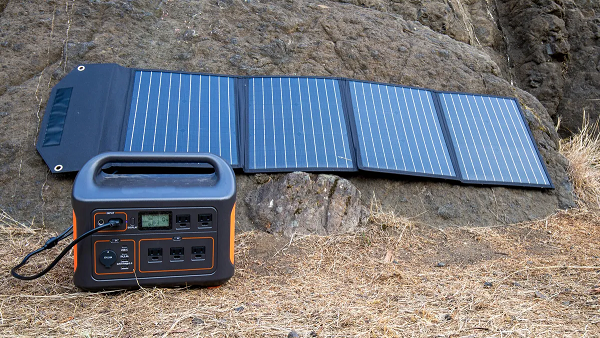Harnessing Solar Power for Your Outdoor Adventures
In today’s tech-driven world, many of us find it hard to disconnect from our devices, even when we’re exploring nature. Whether you’re on a brief hike or camping in remote areas, keeping your phone charged for photos or emergency calls is often a necessity.
The great news is that staying powered up is feasible, even miles away from the nearest electrical outlet. Solar generators—portable power stations connected to solar panels—can charge your devices using the sun’s energy.
“Ultimately, what this is, is convenient, on-the-go power that allows us to live our on-the-go lives, whether you’re camping or off-grid or taking an extended vacation,” says Shawn Budiac, Vice President, Divisional Merchandising Manager at Batteries Plus.
Introducing Solar Generators for Camping
If you’re unfamiliar with portable power stations, they are essentially large batteries that can power your electronics on the go. When paired with portable solar panels, these batteries become “solar generators,” capable of recharging via sunlight, ensuring a continuous power supply.
Solar generators offer numerous benefits during camping. They can charge your phone, power your laptop if you’re working remotely, or run LED lights to illuminate your campsite. They can even operate an oscillating fan to keep insects at bay.
“It’s not only comfort, but it’s also, depending on where you are camping, peace of mind,” Budiac says.
Choosing the Right Solar Generator
Selecting the best solar generator depends on your specific needs. Here are some key considerations:
Battery Capacity
Solar generators vary widely in battery capacity, ranging from 300 watt-hours (Wh) to over 1,500 Wh. For instance, a 300Wh generator can handle around 25 phone charges, run a fan for several hours, or power LED lights for a few days. Higher capacities, such as 600Wh and beyond, offer greater capabilities but come with increased size and weight.
“It just becomes a portability issue,” Budiac explains. He advises considering your power needs carefully to avoid carrying unnecessary weight.
Solar Panel Options
Solar panels also come in various capacities, typically from 100 watts to 300 watts. “The beauty is there’s so many options these days,” Budiac notes. Larger panels charge the generator faster but are bulkier. Under ideal conditions, a 100-watt panel might fully charge a 300Wh generator in about three hours. However, in real-world conditions, charging times will likely be longer due to less-than-perfect sun exposure.
Power Output
Beyond battery capacity, consider the power output of the generator. Larger batteries generally offer higher outputs, but they still have limits. For energy-intensive devices, such as a coffee maker that might initially surge to 1,200 watts before dropping to 500 watts, a 600-watt solar generator should suffice.
Budiac recommends evaluating the power requirements of the devices you plan to use. Ensure the generator’s power output can handle the initial surge and running wattage of your electronics. Also, think about the types of output ports you need—perhaps a mix of USB and standard AC outlets.
With these considerations in mind, solar generators can be a versatile and reliable power source for your next camping trip, ensuring you stay connected and comfortable no matter how far off the grid you venture.

Leave a Reply